Spiritual Technology: A Users Guide For Walking A Labyrinth
A labyrinth is a single path or unicursal tool for personal, psychological and spiritual transformation. Labyrinths are thought to enhance right brain activity. Spiritual Technology: A Users Guide For Walking A Labyrinth
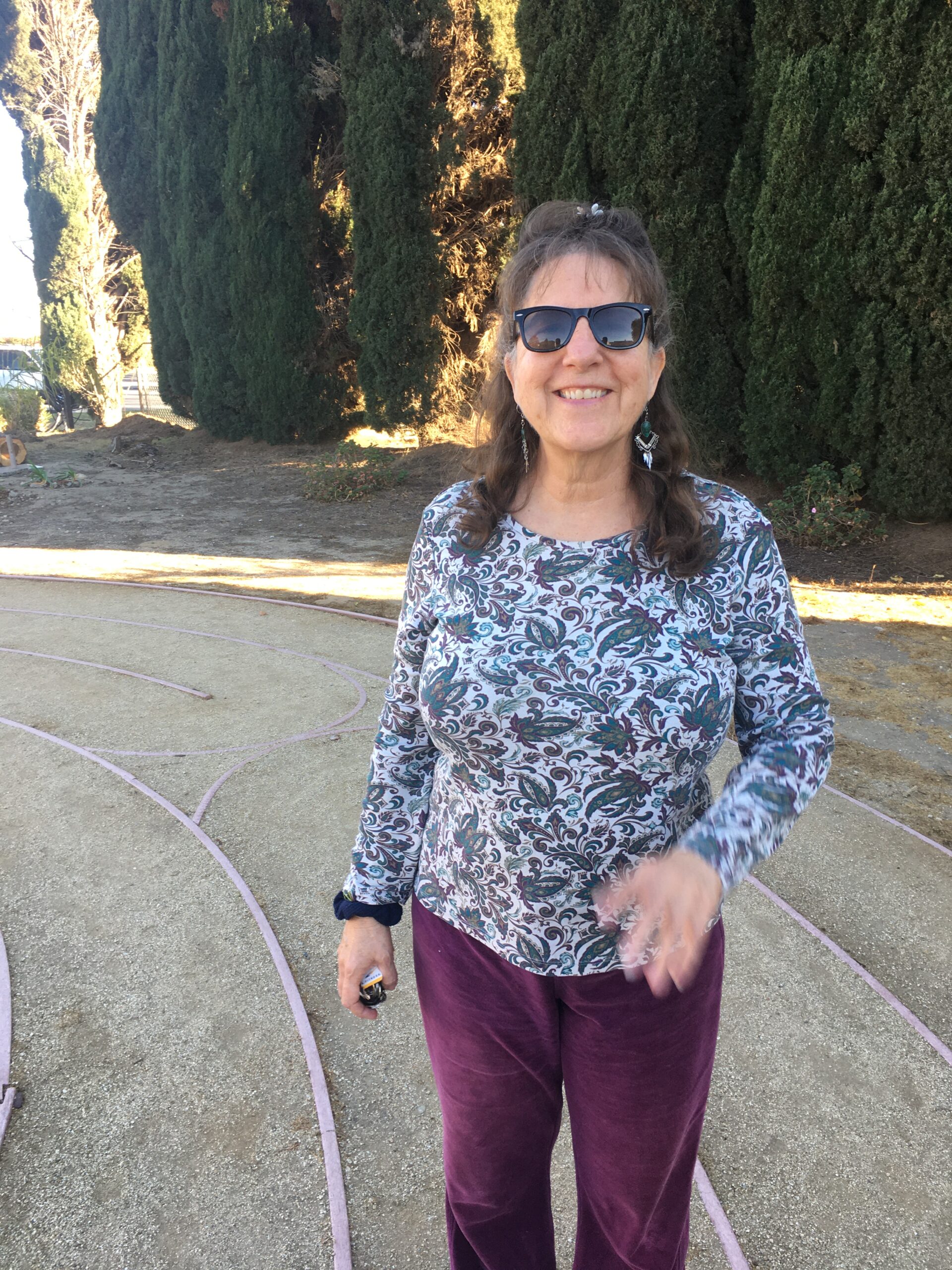
The Classical Seven Circuit Labyrinth in this example shows that you enter a labyrinth

through the mouth and then walk on the paths or circuits. The walls keep you on the path. The goal is in the center of the labyrinth. When you reach it, you have gone half the distance – you now need to turn around and walk back out.
Related:
The Global Consciousness Project
Crystals: The Missing Link Between Mysticism and Technology
What Is Structured Water: The Best Water For Muscular, Skin & Mood Disorders?
Scientific Evidence For ESP A World Where There Are No More Secrets!
Institute of Noetic Sciences (IONS)
The Dogon: An Ancient Tribe With Other-Worldly Knowledge
Sean Harribance & SHIPR, Inc. – Facebook
The Mysterious World of Sacred Geometry
EMF Quiet Zones: Free From Electronic Harassment In USA & Worldwide
Marrying Quantum Mechanics, the Human Brain, Consciousness and the Holographic Universe
The original use and purpose of the Labyrinth has been obscured by time. Its current popularity as a moving meditation has engendered many creative approaches to a potential encounter with Spirit. I have
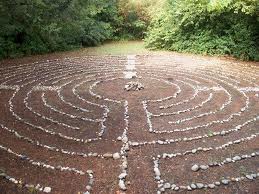
found that being attuned to the Four Directions and other elements in the environment further enhanced this meditation by honoring the natural, non-human world in the way of Native American spirituality.
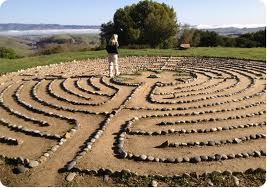
Its unbroken path of circuits and turns, take you in to the center and back out again by the same route. Walking it, you were frequently changing directions (and gaining new perspectives), though still on the path.
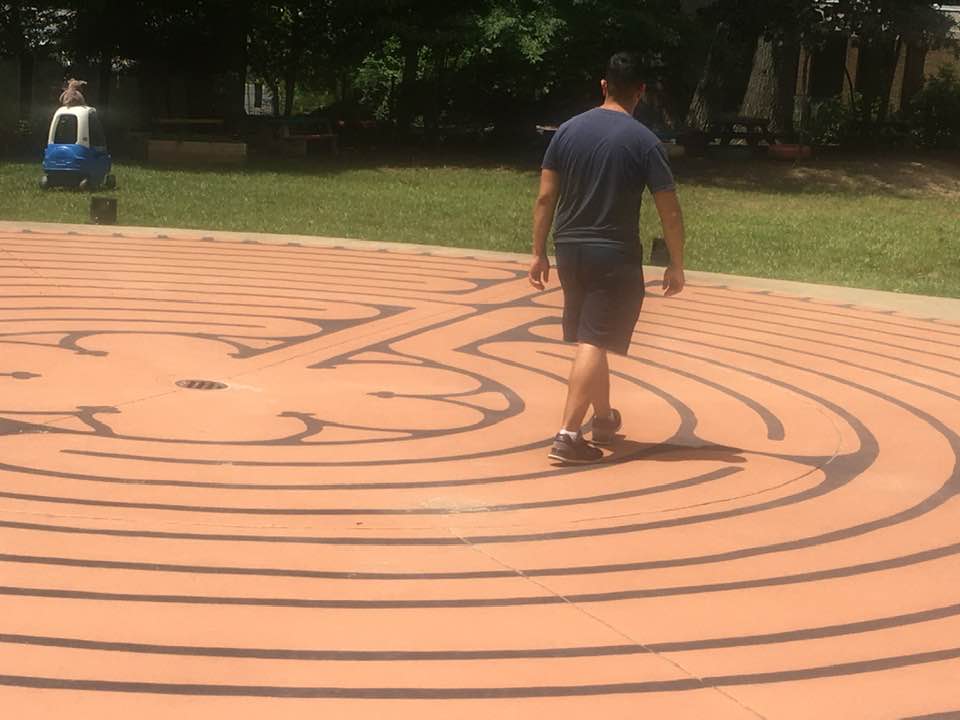
By engaging the body and all its senses, a Labyrinth walker may become receptive to spiritual insights that cannot be accessed by the intellect alone. The simplest guide I found is as follows:
* Going In You Release The Cares And Concerns Which Distract You From Your Source (Spirit);
* Reaching The Center You Discover A Place Of Prayer And Meditation For Clarity;
* Coming Out You Are Granted The Power To Act.
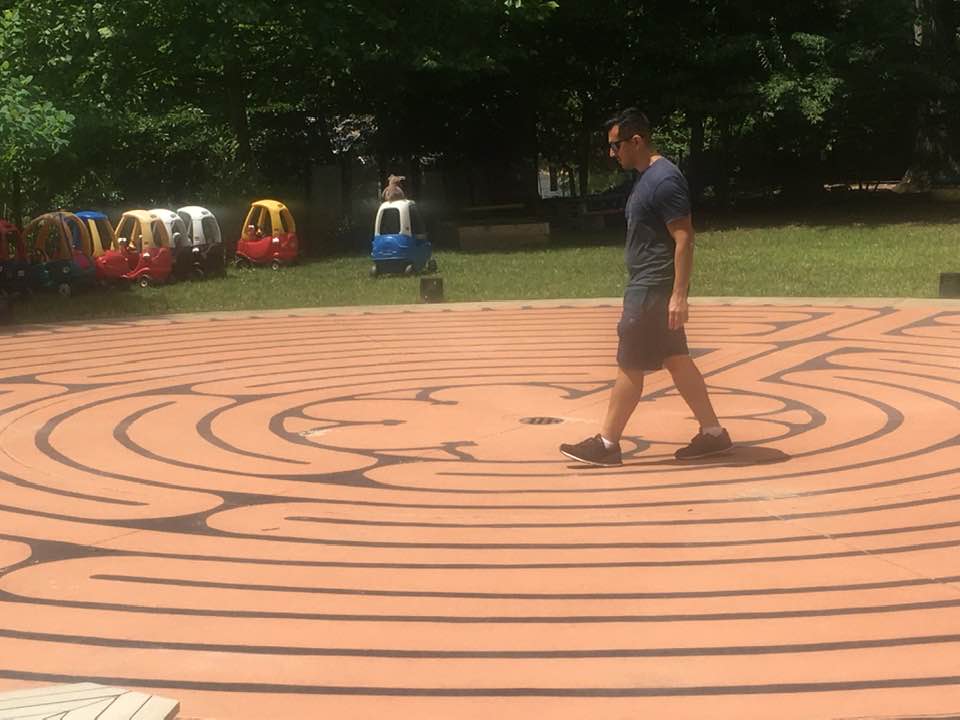
You move inward to a place of stillness, and then outward, the route taken being an intricate spiral. If you stay on the path, you cannot
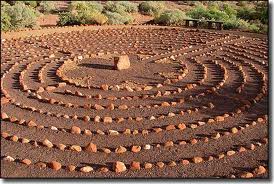
get lost, there are no choices or tricks (as in a maze) involved. All Labyrinth forms follow this basic theme, though not all are circular and the pattern created by the single path varies.
The Medicine Wheel, for example, is more than a symbolic or metaphoric structure; it is co-created with elements in nature that are considered themselves to be conscious entities. It provides a different circular setting but a similar purpose to that of the Labyrinth in connecting you with Spirit and Nature. The physical structure is created ritually using 12 sacred rocks to mark the Four Directions and the circle (Sacred Hoop).
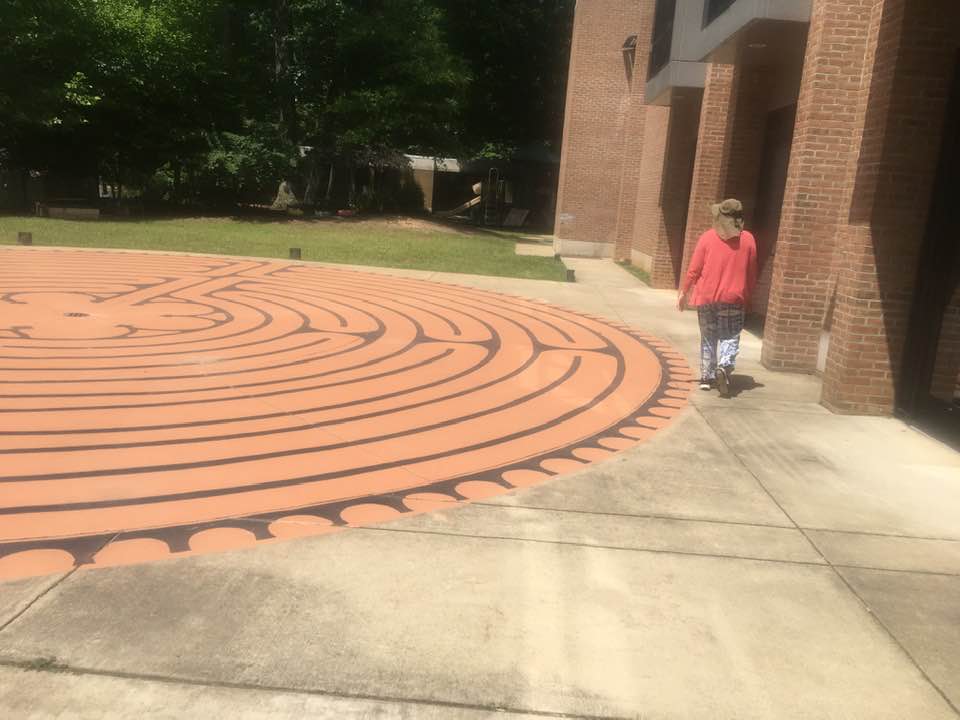
These Stone People are considered to be the guardians of Sacred Ceremonial Space, holding the energy of the circle. It is said that ‘Our Spirit [Wind] can travel around the rim of the Medicine Wheel and send us urges to learn certain lessons…

The power (talents and lessons) of the Four Directions can be immediate answers when sent by the Wind Spirits.’
Just as with the Labyrinth, the Wheel can be adapted as a personal sacred space. One person taking the Wheel as her inspiration, she added a sacred dimension to her garden design with her concept of a Medicine Wheel Garden. She writes:
“the medicine wheel garden can move each of us into new healing and spiritual realms’ and ‘affirm our personal ties with the earth”. “I’ve found being
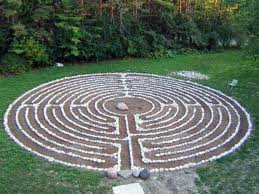
out in nature in this sacred way to be a powerful means of relating to the environment that surrounds us.”
Using the Labyrinth: Chakras, Colors and Music
The Seven Chakras

There seems to be a solid connection between the seven paths of the labyrinth and the seven chakras. There is also a correlation between the chakras and the seven colors of the rainbow.

Notice that you don’t walk these paths in order from one to eight. The colors don’t go Red, Orange, Yellow, Green, Blue, Indigo, Violet (ROY G BIV). ‘Walk’ the labyrinth above with your finger.
You will notice that the order of the paths is 3-2-1-4 / 7-6-5-8. I put a slash between four and seven to show you that this is a pattern that repeats itself twice: 3-2-1-4 and then 7-6-5-8.
Let’s think about this musically .

Some Believe It’s Important To Locate or Place A Labyrinth On One Of The Earth’s Energy Ley Lines.
Some additional Information on how to properly identify an area for a labyrinth you plan to build.
Labyrinths Serve As A Pathway To Peace
“All I asked for was just a little place to walk the walk,” said Ruth Ann Harnisch, a 65-year-old philanthropist.
What she got-after a massive, two-year earthwork project at her home in New York’s Hamptons-is an 86-foot tripartite path of hand-cut stone, set in lush fescue grass.
It took 5,000 square feet of North River bluestone to create the intricately winding walkway-called a labyrinth-which has 18 looping turns and is encircled by a 300-foot-long fieldstone wall. The pavers were set in dry-pack mortar on top of concrete wire mesh, to hold them in place. An underground irrigation system was installed to keep the grass bright and shaggy.

Thirteen mature Yoshino cherry trees, trucked into the site, ring the labyrinth. In the springtime, they shower its walkways with white blossoms. “It’s magical,” said Bill Harnisch, 69, president and CEO of Peconic Partners, an investment firm.
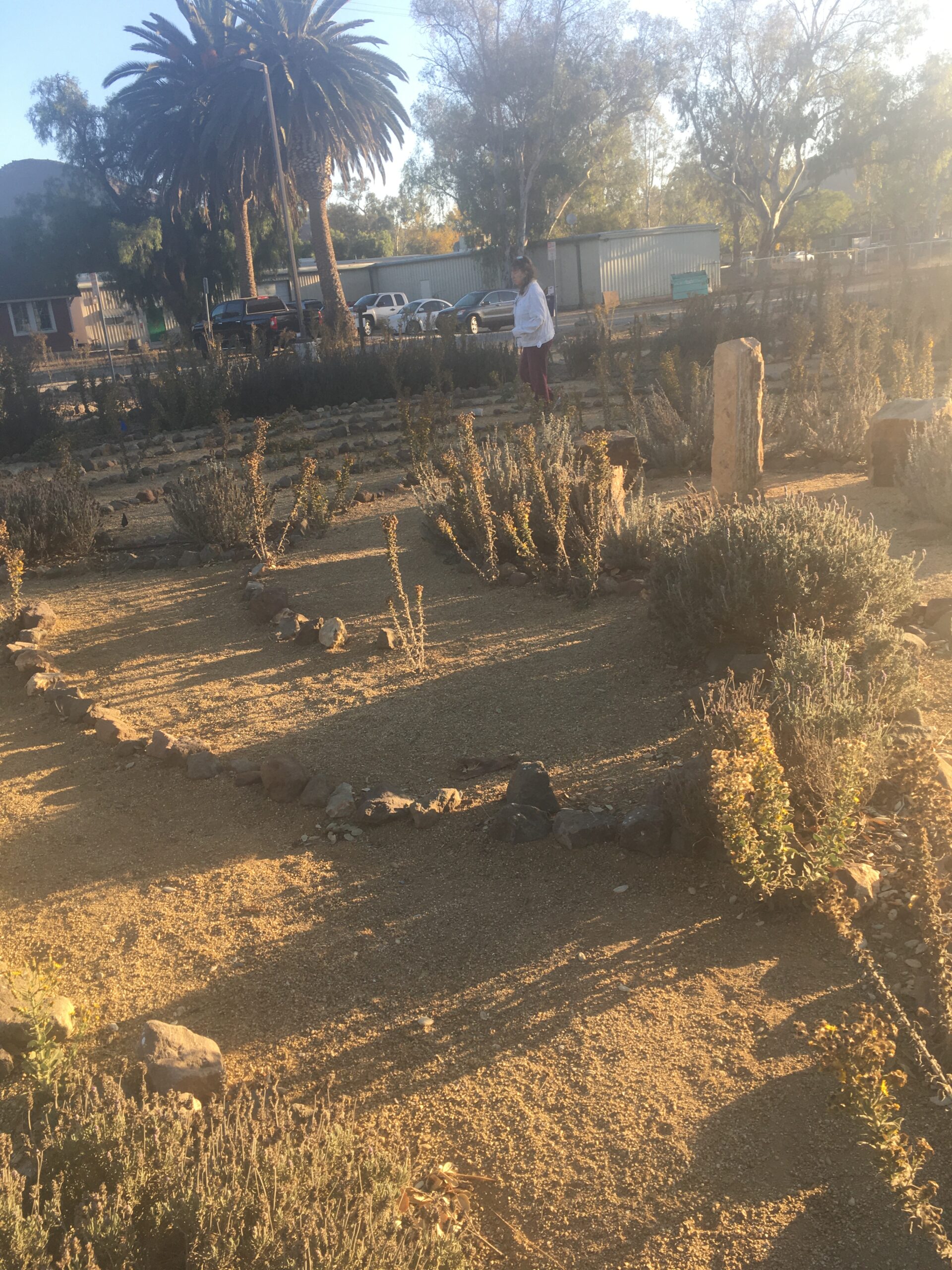
Labyrinths-circular paths for walking meditation that have been widely adapted by churches, hospitals and retreat centers-are now popping up in upscale American backyards. “There are 3,740 labyrinths in the U.S.-it’s really blossoming,” said Lauren Artress, author of “Walking a Sacred Path: Rediscovering the Labyrinth as a Spiritual Practice.”
Some are simple, such as the 30-foot spiral of desert stones that Andrew Weil, the physician, author and founder of the University of Arizona Center for Integrative Medicine, built at his home in Tucson. Other, more lavish walkways evoke the 13th-century labyrinth of Chartres Cathedral in France.
Unlike a maze, which is designed to confuse with multiple paths and dead ends, a classical labyrinth has just one winding path to the center and one path out.
“As a relaxation technique, a technique for promoting mindfulness, it’s very useful,” Dr. Weil said. “You go around and around and back and forth, but eventually you reach a central point… Seeing the goal there, but not getting to it directly-there’s something metaphoric about that.”
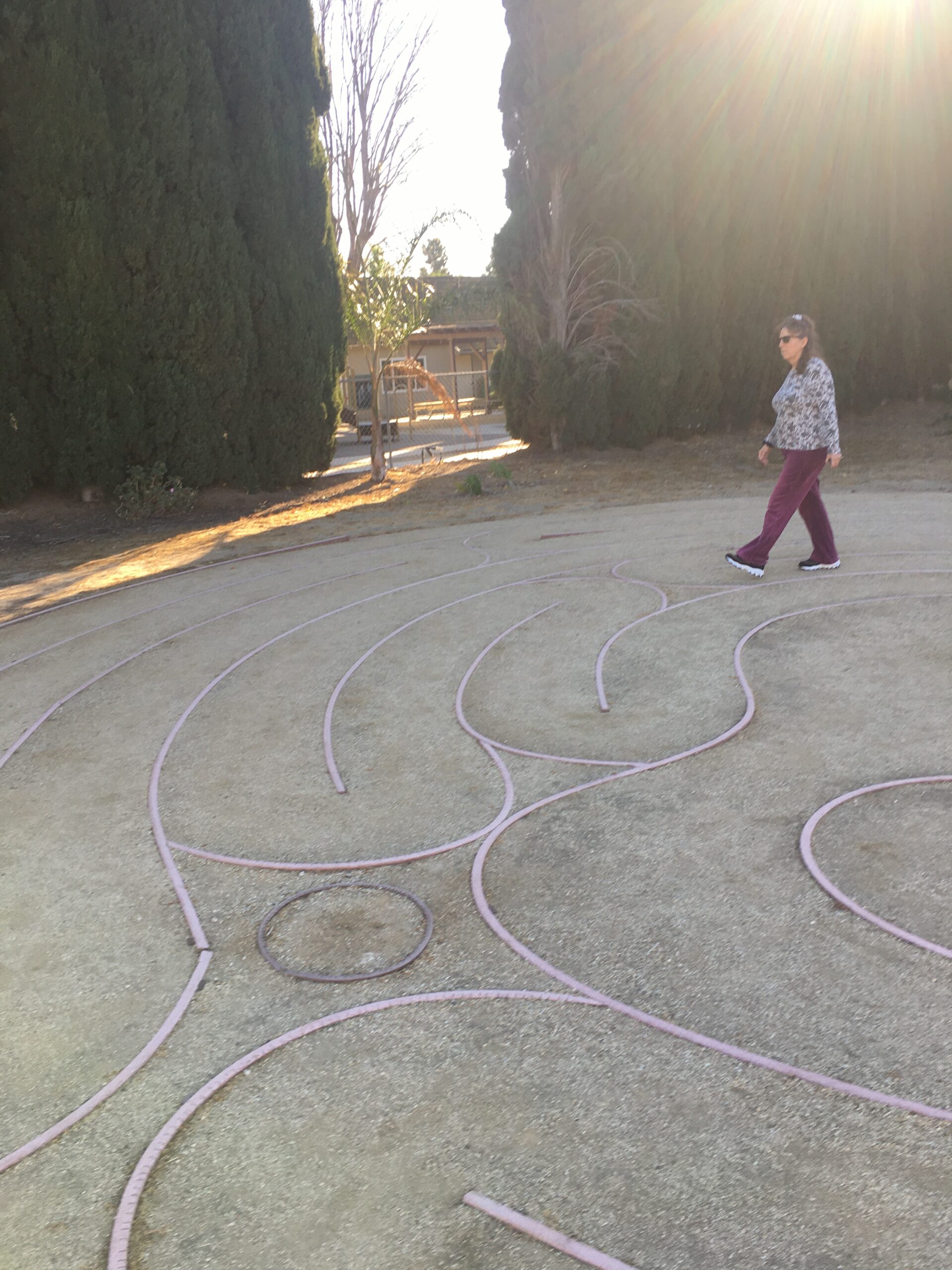
Getting that Zen-like peace can require commitment. Elaborate labyrinths, with lush landscaping, intricate stonework and irrigation, can easily start at around $40,000.
Calculating the cost of the Harnisch labyrinth, completed in 2012, is difficult to estimate, Mr. Harnisch said, because it was only one part of master plan for the 12-acre waterfront property in Southampton Town.
Edmund Hollander, the landscape architect who created the labyrinth, said that the price of replicating it would probably be around $500,000.
John and Pam Corckran built a 24-foot labyrinth on the grounds of their suburban Baltimore home in 2013. The project was a response to the sudden death of their son, John, at age 35.

“My husband and I felt the need to create some space where we could be with our son and think of him,” said Ms. Corckran, who is 67. “A labyrinth was the very first thing I thought of.”
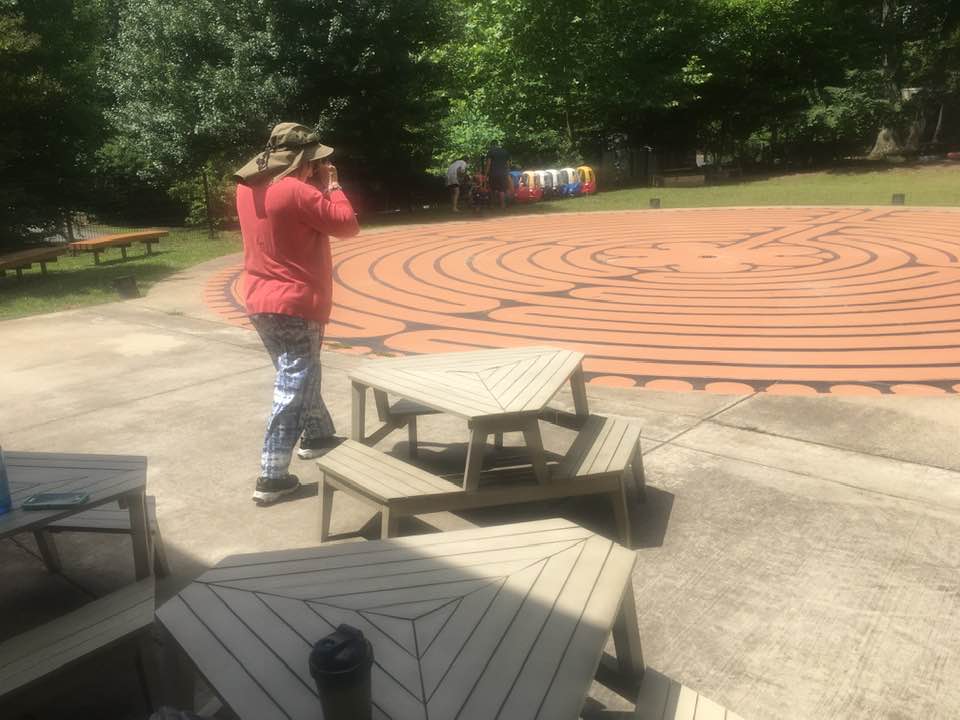
Claire Jones, Ms. Corckran’s landscape designer, said the intricate, quadrant-style labyrinth, which has five circuits, was chosen “to give you a greater journey” within a relatively small space. A stonemason spent a month on the site, hand-cutting and fitting each piece of bluestone atop a bed of pulverized stone dust.

The labyrinth sits inside the curve of a low fieldstone wall. A water feature made from a boulder is positioned at its entrance, amid plantings chosen for color and fragrance, such as Japanese forest grass, clethra, and Lenten rose.
The labyrinth requires little maintenance, although the pavers had to be power-washed this year when moss began to grow.
Ms. Corckran estimated the cost of the entire project at around $40,000.
“It’s very much a part of my life now. If the mood strikes, or I’m having a rough day, it’s the best place to go-with grief you never know,” said Ms. Corckran.
Her design came from the Labyrinth Co., based in Kensington, Conn., which sells 46 different templates for garden labyrinths. Printed on a weed-blocking landscape fabric, the template is set on level, prepared ground and then filled with stone, gravel, or sod-much like a paint-by-numbers kit.

The company also sells concrete paver kits, including six variations on the Chartres Cathedral labyrinth.
“That’s the one most people want to reproduce-I specialize in that,” said David Tolzmann, the company’s founder and president, who has built full-size Chartres replicas-42.3 feet in diameter-in granite, French limestone and Turkish travertine, with costs ranging between $50,000 to $250,000, he said.
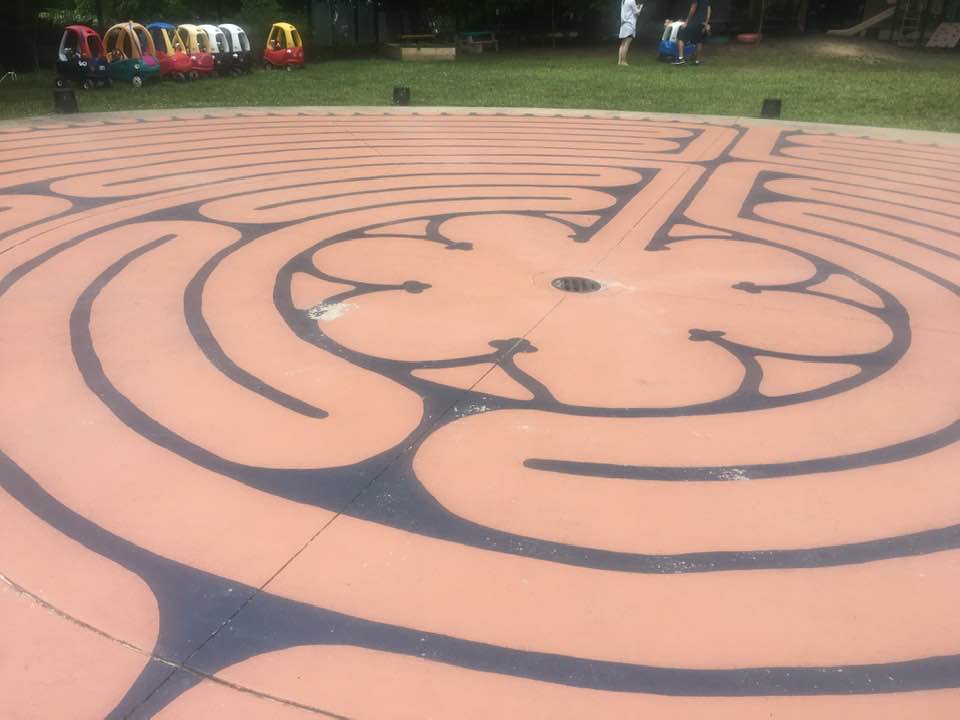
Mr. Tolzmann said that private clients account for between a quarter to a third of his business, and generated “several hundred thousand” dollars in sales last year.
“There’s been an increase in private demand. I don’t think it’s spiked yet-I’ve been doing this 20 years, and every year we do more,” he said.
Suzanne Deal Booth, an art-preservation advocate and collector based in Austin, Texas, decided to create a 24-foot labyrinth at her Napa Valley home. The labyrinth is located within a small grove of old Sevillano olive trees on her 27-acre vineyard property in Rutherford, Calif.
“I’d been to Chartres, which is incredibly beautiful,” said Ms. Deal Booth, who is 60. “This space was so much smaller. If someone else is walking you could actually brush shoulders with them-it’s tight-but because of the olive trees it feels right.”
Belgian cobblestones line the labyrinth’s paths of gravel, chosen for its satisfying crunch underfoot.
Tall bay laurel hedges and sculpted boxwood globes screen the labyrinth from an adjacent driveway, creating “this lovely secret spot,” said landscape designer Sarah Keizer, of Andrea Cochran Landscape Architecture.
Reclaimed granite curbstones from Boston were repurposed as a path leading to the labyrinth, and a 1,600-pound Montana slate ledgestone was positioned at its center as a perch.
“It’s probably a 10-minute walk in, 10 minutes on the rock, and then 10 minutes out,” said Ms. Deal Booth, who estimates the cost of the labyrinth at $45,000.
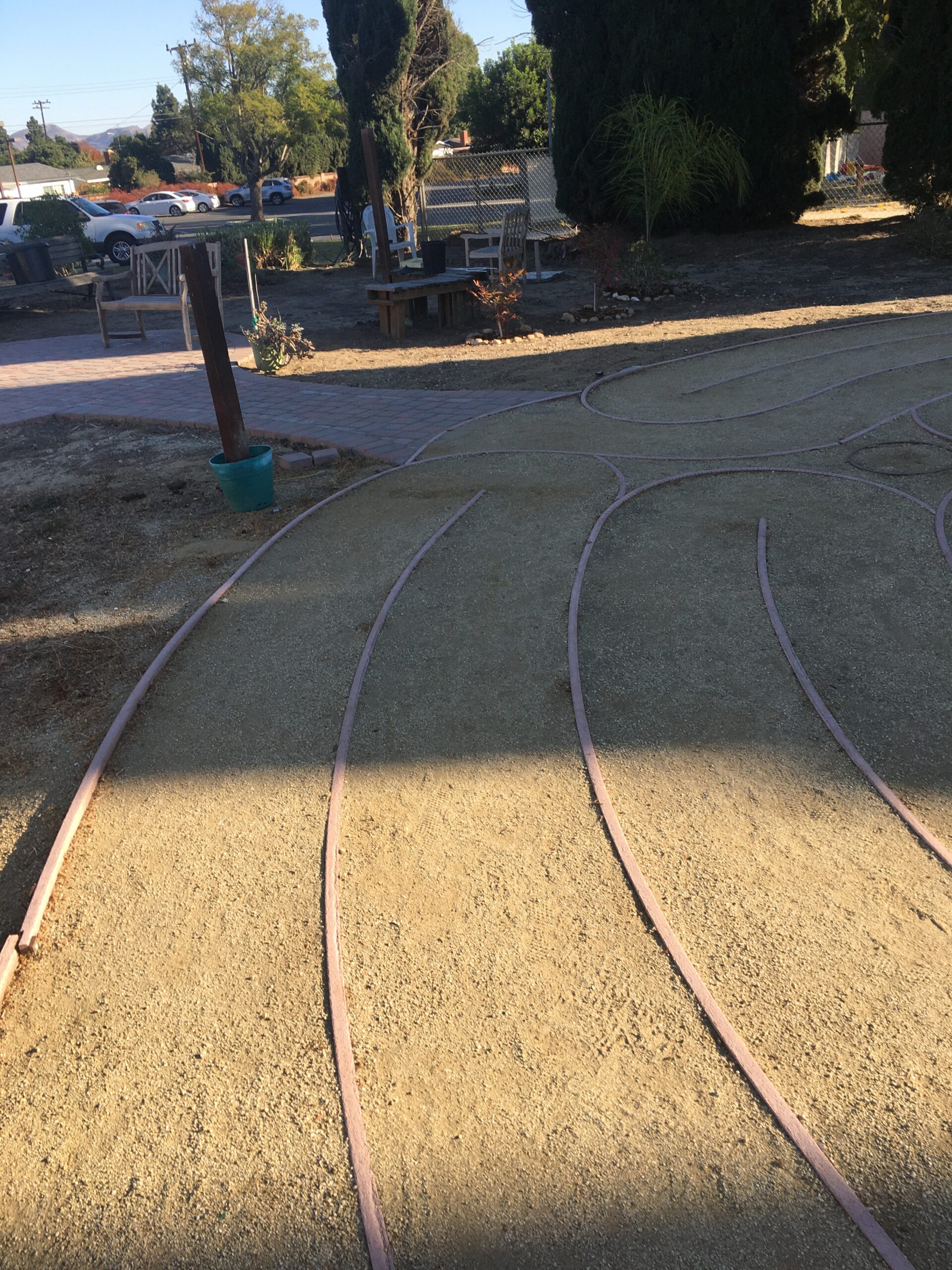
Kim Visokey, an ardent gardener who blogs as the “gardenfreak,” was inspired to transform her 1-acre property in Winnetka, Ill., into a pair of intersecting spiral labyrinths. “All it is, is sod cut at two different levels.
It’s been cut this way for so many years, it’s just established itself as sculpture,” said Ms. Visokey, who is 55. “It looks fabulous in winter when there’s frost on it.”
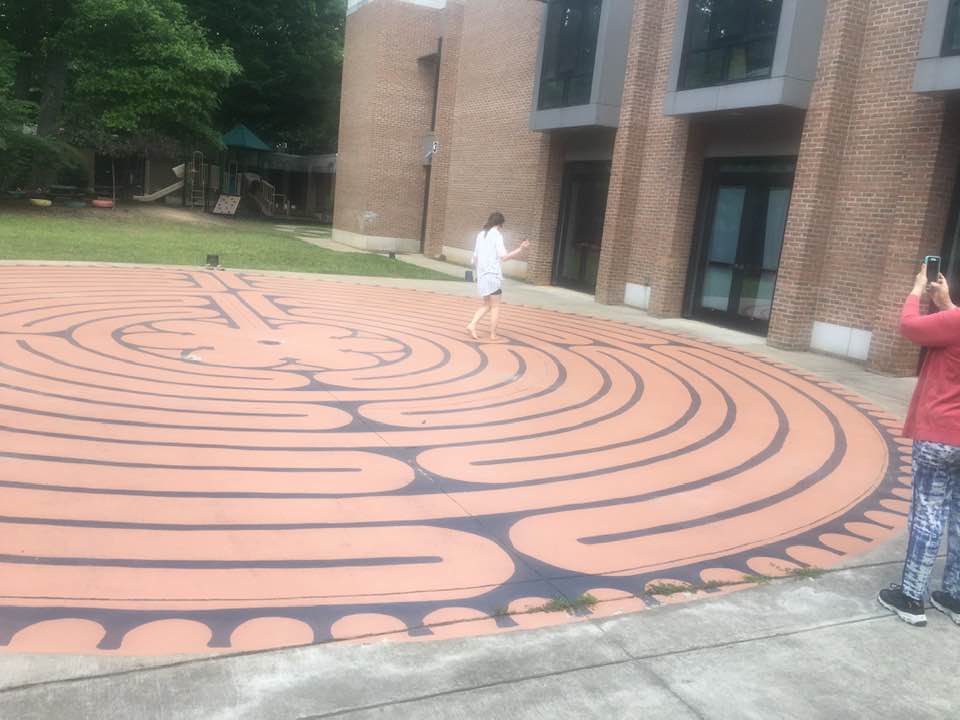
The first spiral, which is 80 feet in diameter, was cut into the Kentucky bluegrass-blend turf in 2006. Ryan Kettelkamp, Ms. Visokey’s landscaper, tied a 22-inch lawn mower to a stake at the center of the lawn, and mowed in diminishing circles around it-a process he compared to a dog on a leash running around a pole.
A second smaller spiral was added in 2007. “So many people have big amorphous amoebic lawns,” said Mr. Kettelkamp. “We set out to create a unique space.”
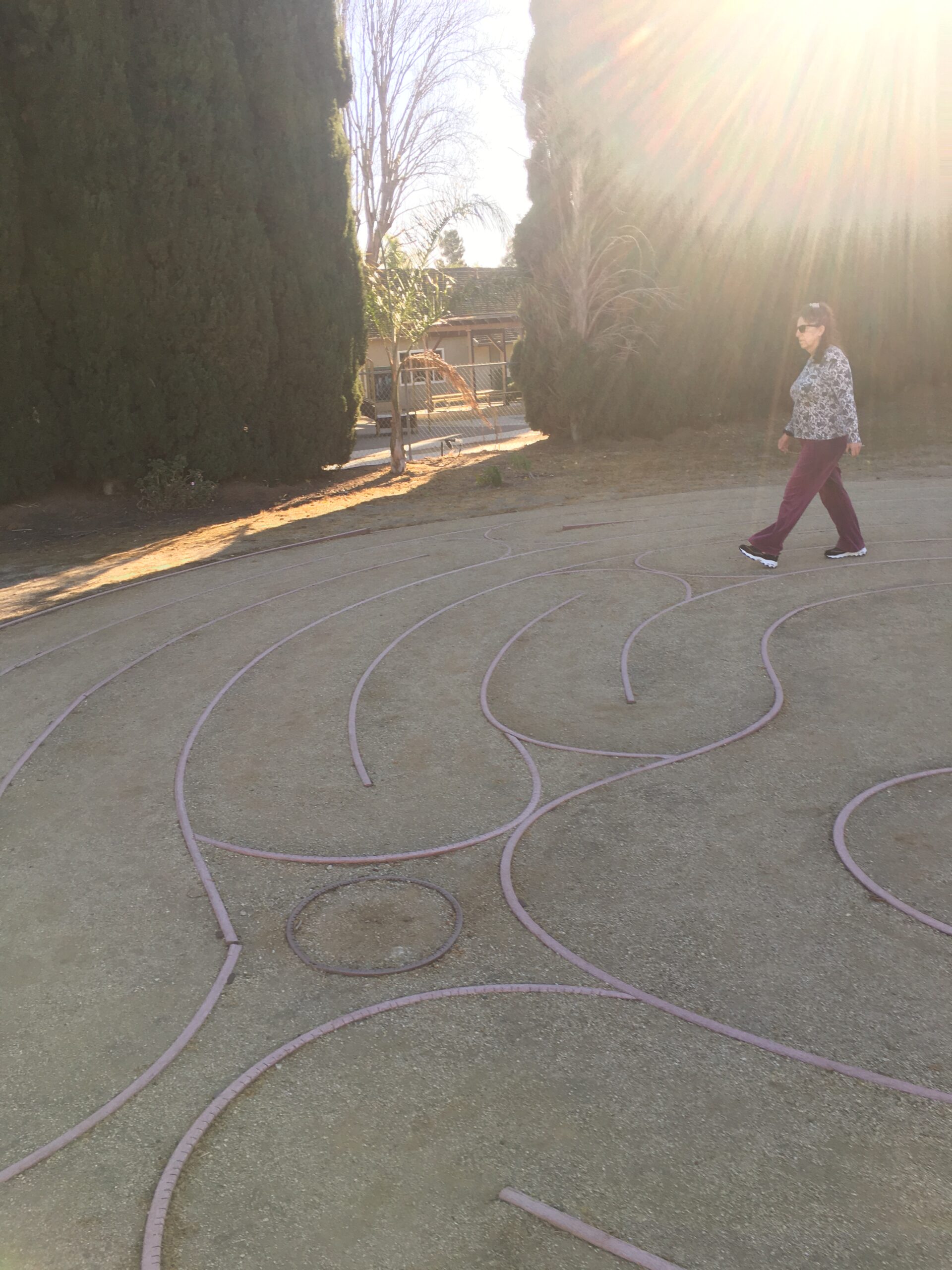
Ms. Visokey pays about $100 each week between May and November to a mowing team, which manicures the labyrinths’ pathways under her supervision.
She said the spirals are a hit with visitors on garden tours, as well as her own family; on a recent visit home, her three children, who are in their 20s, took over the large labyrinth for an impromptu morning yoga session with their friends.
“If you want to play croquet, I guess it wouldn’t be the lawn for you,”Ms. Visokey said.

Updated: 7-4-2023
Archaeologists May Have Found Labyrinth Ruins Of Fabled Entrance To Zapotec Underworld
Spanish missionaries deemed Lyobaa to be a “back door to hell” and sealed all entrances.
In 1674, a priest named Francisco de Burgoa published his account of visiting the ruins of the Zapotec city of Mitla in what is now Oaxaca in southern Mexico. He described a vast underground temple with four interconnected chambers, the last of which featured a stone door leading into a deep cavern.
The Zapotec believed this to be the entrance to the underworld known as Lyobaa (“place of rest”). Burgoa claimed that Spanish missionaries who explored the ruins sealed all entrances to the temple, and local lore has long held that the entrance lies under the main altar of a Catholic church built over the ruins.
An international team of archaeologists recently announced that they found evidence for this fabled underground labyrinth under the ruins—right where the legends said it should be—after conducting scans of the site using ground penetrating radar (GPR), electrical resistivity tomography (ERT), and seismic noise tomography (SNT). The team also found evidence of an earlier construction stage of a palace located in another part of the site.
Mitla is one of the most significant archaeological sites in Oaxaca Valley. It was an important religious center, serving as a sacred burial site—hence its name, which derives from Mictlan (“place of the dead” or “underworld”).
The unique structures at Mitla feature impressively intricate mosaics and geometric designs on all the tombs, panels, friezes, and walls, made with small polished stone pieces fitted together without using mortar.
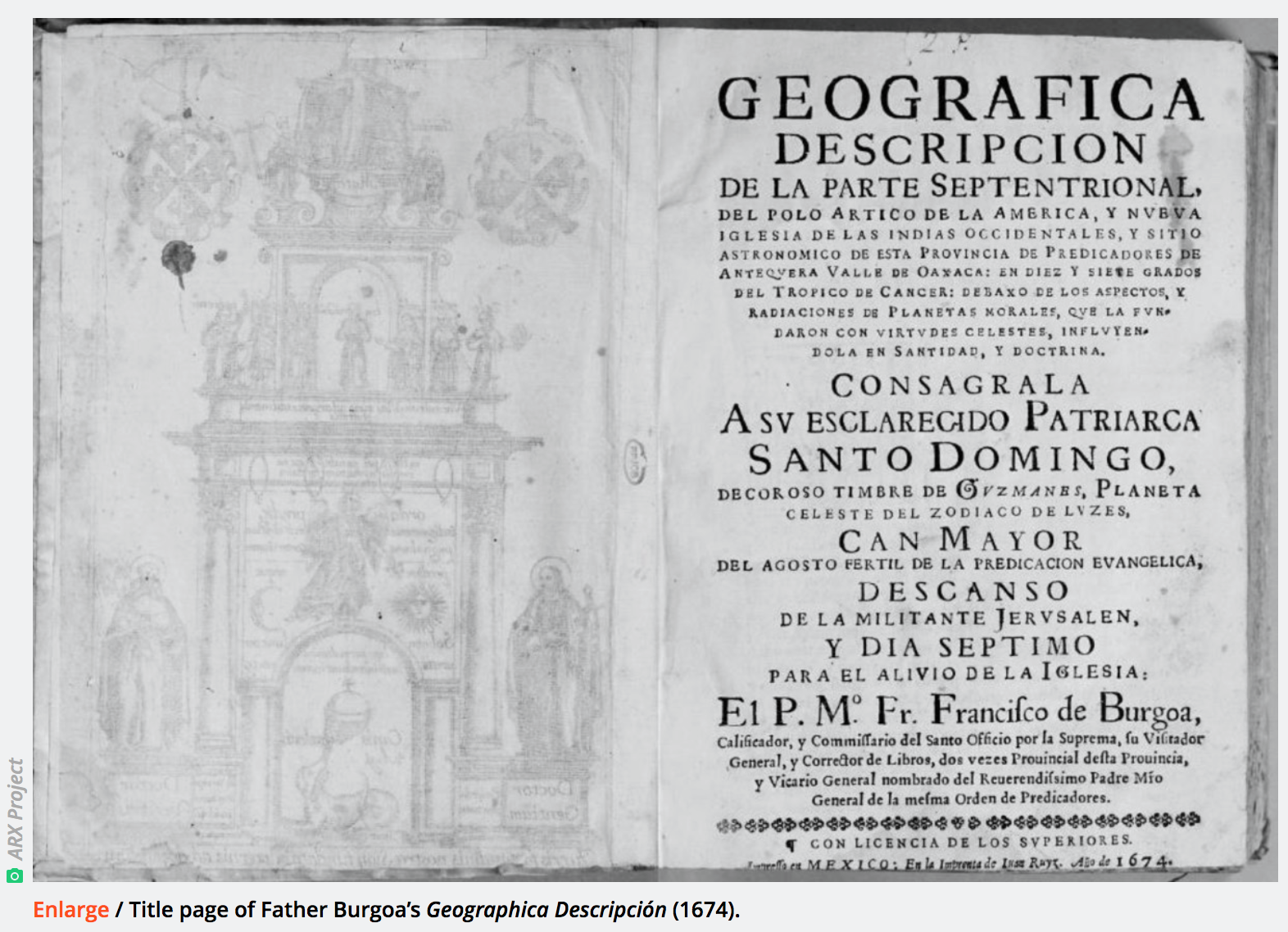
Spanish soldiers and Christian missionaries began arriving in the valley in the 1520s, and several mentioned the ruins of Mitla in their accounts. Naturally, they interpreted the underground temple as a site for an “evil spirit” and its “demoniacal servants.”
Burgoa’s writing is the most descriptive, detailing how the Zapotec high priest used the palace of the living and the dead. He marveled at the mosaics and skilled construction of the site. And he specifically mentioned four chambers above the ground and four chambers below the ground.
Per Burgoa, the first underground chamber served as a chapel; the second was where the high priests were buried; the third was where the kings were buried, along with their luxurious worldly goods; and the fourth featured a door at the rear which purportedly led to “a dark and gruesome room.”
A stone slab covered the entrance. “Through this door they threw the bodies of the victims of the great lords and chieftains who had fallen in battle,” Burgoa wrote.
It seems that certain “zealous prelates” decided to explore the underground structures, carrying lighted torches and using ropes as guides to ensure they didn’t get lost. They encountered “putrefaction,” foul odors, and “poisonous reptiles,” among other horrors.
Once back above ground, the explorers walled up what they considered to be a “back door to hell.” An archbishop ordered Mitla destroyed in 1553, and the stone blocks and other rubble were used to build various Spanish Catholic churches, most notably the Church of San Pablo, built right on top of part of the ruins.
Several modern explorers subsequently found their way to the ruins at Mitla between 1834 and 1960. Various small underground chambers were discovered during those and later excavations, but nothing that matched Bergoa’s description of a vast labyrinthine network of large connected chambers. Still, the legend persisted.
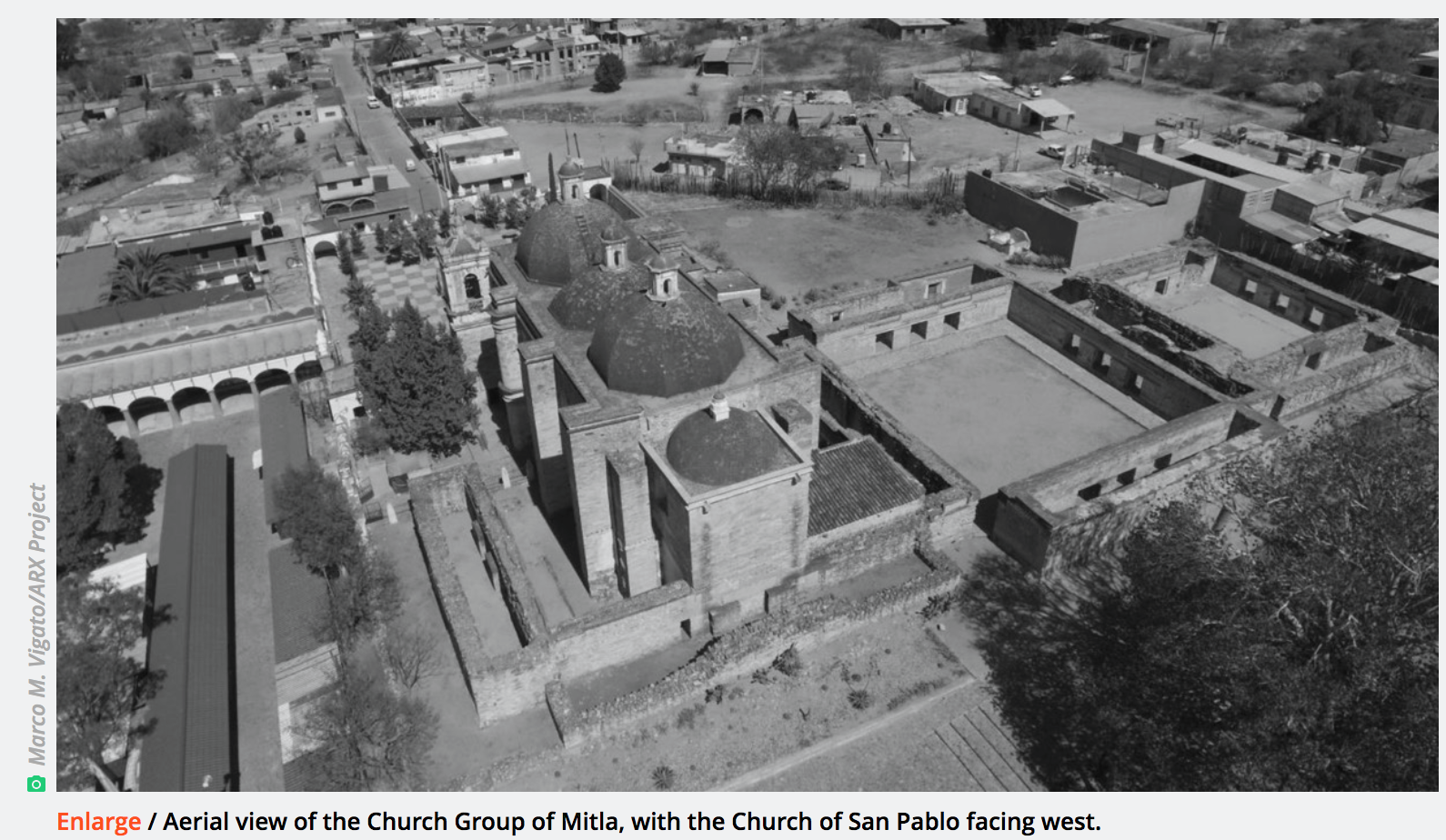
Enter the fine folks at the Archeology Research and Exploration (ARX) Project. They started a collaboration called Project Lyobaa with the Mexican National Institute of History and Anthropology (INAH) and the National Autonomous University of Mexico (UNAM) to apply non-destructive geophysical methods commonly used for archaeological research and conservation to the site in hopes of uncovering evidence of the lost underground chambers.
The three methods measure different reflection properties of various types of electromagnetic and seismic waves through various subsoil layers and materials.
Among other uses, this can help detect any underground cavities—like those the Zapotec reportedly used in rituals connected with the cult of the dead—or buried objects and/or archaeological structures.
Today’s site has five distinct groups of buildings: the South, the Adobe, the Arroyo, the Columns or Palace, and the Church or North Group. The latter two have been fully excavated and restored and are open to the public, and both feature single-story rectangular buildings surrounding rectangular courtyards.
The team decided that the Church Group seemed the most likely match for Burgoa’s 17th century description, particularly since that area has not yet been extensively explored, given that the Church of San Pablo still stands over the ruins.
For instance, the Church Group has three communicating courtyards of diminishing sizes, surrounded by rooms on all four sides, and there is a strong possibility that a fourth courtyard existed either to the north or the south. That matches Burgoa’s description of four communicating chambers (or courtyards) above ground and four below.
The Church Group sits on natural bedrock in an area known for natural caverns. The team thought building a Catholic church on top of the ruins was a way to “Christianize” a ritualistic site. Plus, San Pablo is a saint associated with caves and other underground spaces.

So they placed various arrays of electrodes and geophones around the church. Once all the data and imagery collected with GPR, ERT, and SNT had been combined, the team produced a 3D model of the site.
The GPR and ERT data confirmed the existence of a large void beneath the main altar of the Church of San Pablo, which seemed to connect with another anomaly to the north of the Church.
There are also two passages entering the main void from the east, between five and eight meters deep. The team was also able to identify a possible blocked entrance under the main altar.
Furthermore, there was evidence of an earlier construction phase for the Palace of the Columns (in the Columns Group), in the form of a stairway leading to a portico with two doorways, as well as evidence of a deep trench that may have been dug by archaeologists or treasure hunters sometime in the past century.
The same joint team will return to Mitla later this year to continue their geophysical research, this time expanding their focus to incorporate groups of structures to the west and south of the site. They are also seeking permission to conduct more scans of the church of San Pablo to get images with better resolution.
Related Articles:
Mystery Signal Coming From Inside The Milky Way Is Repeating Itself
Your Questions And Comments Are Greatly Appreciated.
Monty H. & Carolyn A.

Leave a Reply
You must be logged in to post a comment.